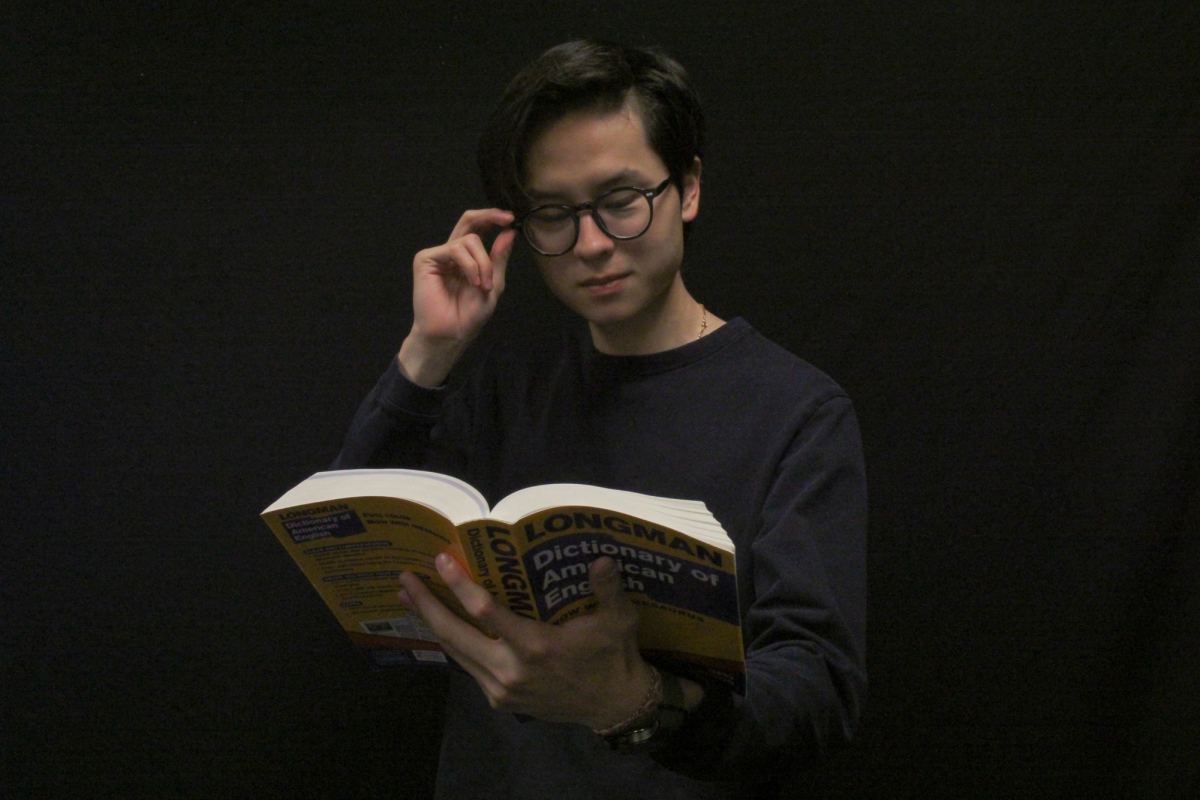- Three students received perfect scores on AP 2-D Art and Design portfolios during last year’s AP exams.
- All three artists had measurably different approaches to their work: Junior Hannah Liaw explored nostalgia, senior Annabel Qin focused on environmentalism and alumna Medha Lolayeker reflected on self-perception.
- Mr. Reynolds praised students’ dedication, emphasizing experimentation, and developing a personal creative voice.
Senior Annabel Qin, junior Hannah Liaw and alumnus Medha Lolayeker were three out of 337 students worldwide to receive perfect scores on the 2022-23 AP 2-D Art and Design portfolios — a substantial milestone for the Lynbrook art department. Liaw was also one of 50 students nationwide chosen for the AP Art and Design Online Exhibition, which features pieces from each selected artist on the College Board website.
“It felt unreal,” Lolayeker said. “When I was making my portfolio, I thought that there was no way I could get more than a four. Getting that full score was pretty exciting.”
The AP 2-D Art and Design exam assesses a student’s ability to create thoughtful analyses of their work and demonstrate artistic understanding. This exam assesses the student work accumulated from the entire year. A typical portfolio consists of 20 pieces and written responses reflecting the creative process behind each piece and the artist’s technical understanding.
“In all the 17 years I’ve been teaching, I only had one other student who got a perfect score, so to have three students in one class from one school in one year is extraordinary,” Reynolds said. “It really speaks to those students pushing themselves.”
Sixty percent of the grading for a portfolio stems from Sustained Investigation — a collection of 15 out of the 20 pieces that shows the growth of a student’s skill as they explored a concept they selected, such as identity or societal issues. In Liaw’s Sustained Investigation, she created a series of works centered around the intersection of nostalgia, dreams and fears and the different expectations of growing up. One of her pieces, a digital artwork, emulates the mixed feelings of looking back into childhood. In the painting, a girl peers beneath a wooden bed frame, finding cluttered boxes and miscellaneous objects from her younger years.
“She came into the AP class with a strong set of technical skills, and she pushed to find new ways of broadening her understanding both technically and conceptually,” Reynolds said in a teacher statement on Hannah’s submission.
Liaw is proud of how she managed her time and created symbolism through colors, and improved her own composition through the year. Nevertheless, she hopes to improve her pacing.
“I think that there’s room for improvement in my speed and I should avoid getting too caught up in the fine details,” Liaw said. “When deciding on a theme, it’s best not to be overly concerned about what it’s going to be in the beginning. Begin with a broad topic, and as the pieces start coming together so will your theme.”
Qin’s concept for her portfolio stemmed from environmentalism, eventually morphing into the concept she incorporated: excess human waste and overconsumption. Qin drew inspiration from many historical pieces, such as “The Swing” by Fragonard and other historical figures, like Marie Antoinette.
“The honor was unexpected because I was quite unhappy with a few of my pieces,” Qin said. “However, I think it’s important to have a developed approach because College Board wants to see how you develop your work over time.”
Although Qin encountered obstacles during the process, such as feeling as if she had rushed through some pieces, she continued to persevere. She is especially proud of her acrylic painting that features numerous hands reaching down into a pool of fish and represents the human nature of overconsumption through the hands grasping at the fish from above. For aspiring artists, Qin encourages taking more risks.
“Sometimes it will be enough to focus on synthesis and experimentation,” Qin said. “I think that’s actually pretty important. Most people are skilled enough for College Board, so you have to focus on experimentation.”
Meanwhile, through analysis of perspective, Lolayekar reflected on society’s perception of self and perfection. A shattered glass motif is prominent throughout her portfolio and delivers the theme of judgment. Lolayekar also brings increased impact into her artworks by using real pictures of herself and her environment.
“Mr. Reynolds helped me so much throughout the whole process,” Lolayeker said. “When I was stressed out and frazzled, he’d help figure out what the flow of my pieces are and what I’m really trying to say.”
Lolayekar employed gouache painting in most of her pieces, a medium she enjoyed but was not familiar with at first. However, she steadily improved as she laid out pieces and constructed concepts.
“Definitely don’t procrastinate,” Lolayeker said. “That was one of my takeaways, and then another is just to be loose with it, and don’t think too much about the details. Go for it. If you set your mind to it, you’ll do it.”
Qin is now taking Studio Art, where she can produce artworks without the pressure of AP exams. Liaw takes art classes outside of school, while college freshman Lolayeker creates graphic designs for clubs at her school in her free time. The students’ achievements will pave the way for new accomplishments to come, reaching audiences beyond the art department. A collection of their works will be coming soon to the GSS for public viewing.
“We’re focused on the idea of developing a personal creative voice,” Reynolds said. “I’m hoping that displaying these artworks will spark people’s curiosity about ‘Hey, what’s going on over there?’ I hope more people will be interested in experimenting with art because it’s very different from other classes.”








































































